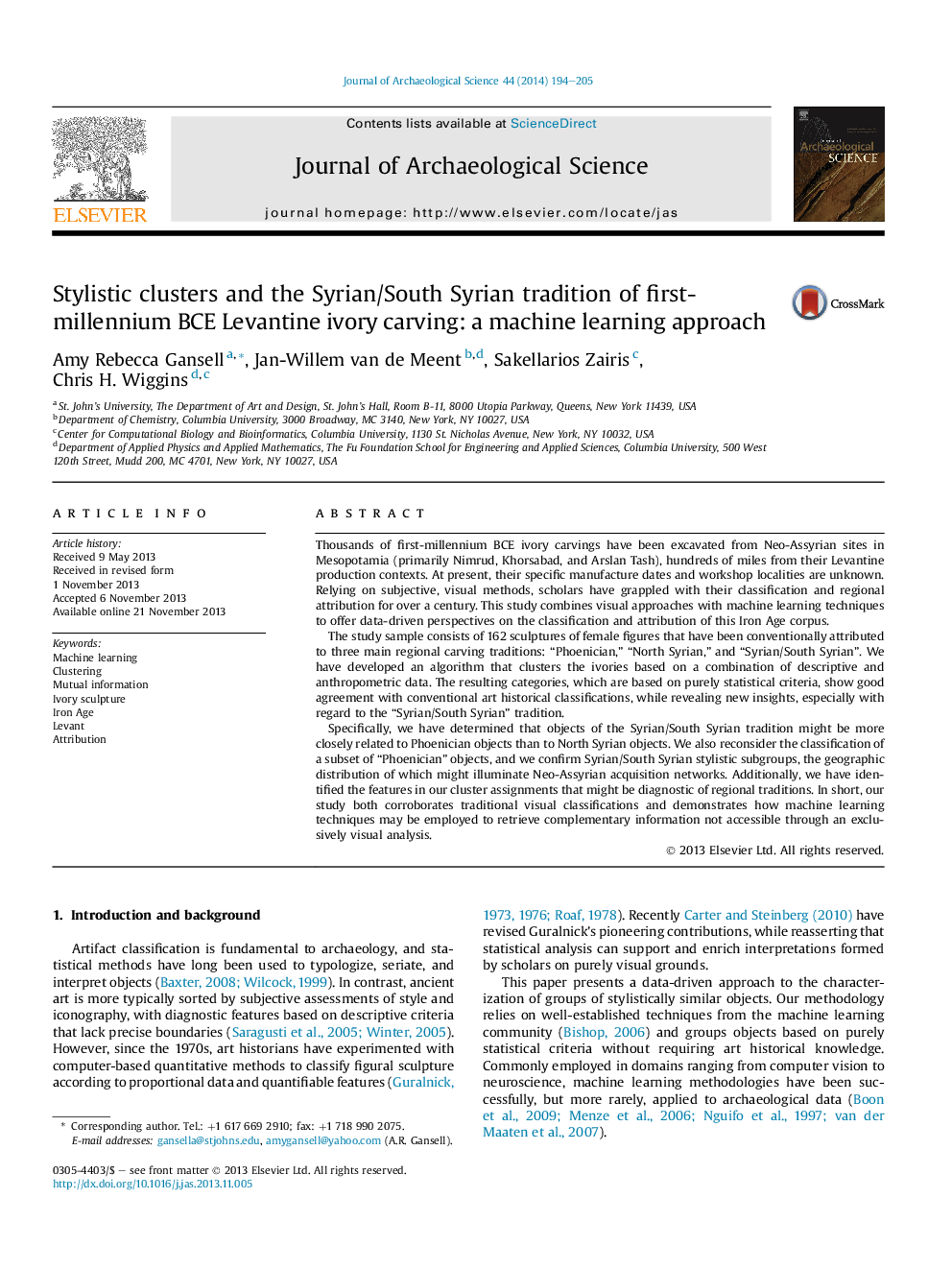| Article ID | Journal | Published Year | Pages | File Type |
|---|---|---|---|---|
| 1035393 | Journal of Archaeological Science | 2014 | 12 Pages |
•Machine learning approach augments traditional visual classification methods in the regional attribution of Iron Age Levantine ivory sculpture.•Descriptive and anthropometric data are combined in a mixed model analysis.•Conventional interpretations of regional attribution are corroborated, refined, and nuanced.•Information theoretic analysis reveals which object features drive cluster assignment.
Thousands of first-millennium BCE ivory carvings have been excavated from Neo-Assyrian sites in Mesopotamia (primarily Nimrud, Khorsabad, and Arslan Tash), hundreds of miles from their Levantine production contexts. At present, their specific manufacture dates and workshop localities are unknown. Relying on subjective, visual methods, scholars have grappled with their classification and regional attribution for over a century. This study combines visual approaches with machine learning techniques to offer data-driven perspectives on the classification and attribution of this Iron Age corpus.The study sample consists of 162 sculptures of female figures that have been conventionally attributed to three main regional carving traditions: “Phoenician,” “North Syrian,” and “Syrian/South Syrian”. We have developed an algorithm that clusters the ivories based on a combination of descriptive and anthropometric data. The resulting categories, which are based on purely statistical criteria, show good agreement with conventional art historical classifications, while revealing new insights, especially with regard to the “Syrian/South Syrian” tradition.Specifically, we have determined that objects of the Syrian/South Syrian tradition might be more closely related to Phoenician objects than to North Syrian objects. We also reconsider the classification of a subset of “Phoenician” objects, and we confirm Syrian/South Syrian stylistic subgroups, the geographic distribution of which might illuminate Neo-Assyrian acquisition networks. Additionally, we have identified the features in our cluster assignments that might be diagnostic of regional traditions. In short, our study both corroborates traditional visual classifications and demonstrates how machine learning techniques may be employed to retrieve complementary information not accessible through an exclusively visual analysis.
